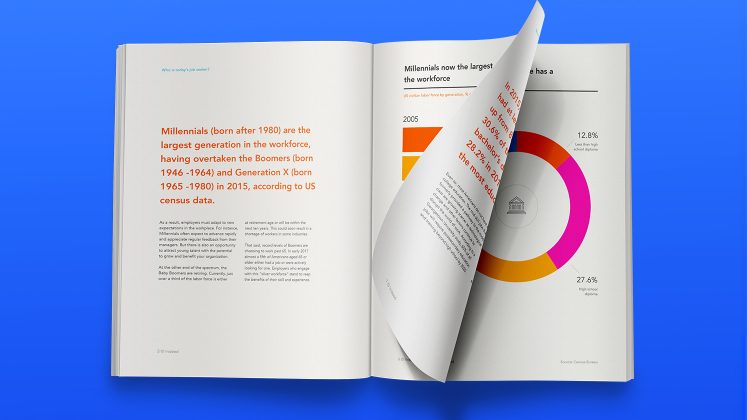Key Points
- In February 2022, 38% of jobless women of prime working age actively searched for work compared with 43% of their male counterparts.
- Unemployed men and women offer different reasons for lack of job search urgency, with women citing childcare needs more than twice as often as men.
- Among employed workers looking for new jobs, higher pay is king, though women want remote jobs significantly more than men.
The pandemic’s initial labor market damage was vast and women bore the brunt of it. Since then, recovery has been robust, but often uneven along gender lines. In a tight labor market where employers are wondering where the workers are, the question of how to draw jobless women back into the workforce has been in the spotlight.
The Indeed Hiring Lab’s monthly Job Search Survey, conducted since May 2021, offers clues about the differing attitudes of women and men toward work. It shows a substantial gender gap in search patterns between jobless men and women ages 25-54, prime working age, and in their reasons for not urgently looking for work. Gender differences are also evident in the reasons given for seeking new jobs among already-employed prime-age men and women, but the gaps are much smaller.
Jobless women search for work less than men
In February 2022, 43% of jobless men and 38% of jobless women actively searched for work. That’s in sharp contrast with their employed counterparts, with 27% of both employed men and women actively searching for jobs in February. The percentage point gaps between employed men and women are small throughout the eight-month sample, with a maximum spread of 3.9 percentage points in December 2021. The disparity between jobless men and women is much larger, statistically significant in half the months sampled and reaching a 15 percentage point difference in January 2022.
It’s a similar story for job search urgency. In the sample, 65.8% of unemployed men reported their job search was urgent compared with 54.7% of unemployed women. That’s a statistically significant and larger spread than the 3.4 point gap between employed men and women.
The substantial divergences between the job search patterns of the two sexes illustrates that unemployed men and women apparently face different sets of circumstances, which could explain why women’s employment has recovered slower than men’s.
Unemployed women seeking jobs aren’t searching as urgently as men
Unemployed men and women offered differing reasons why they were not urgently searching for work. Three were statistically significant: spousal employment, childcare, and a financial cushion. Some 41% of unemployed women responded that an employed spouse was a reason for not urgently searching compared with just 17% of men. Childcare responsibilities were cited nearly twice as often by unemployed women than by men. And unemployed men were more likely than women to say they had a financial cushion that allowed non-urgent search.
The pandemic has produced extensive childcare challenges and employment shocks, particularly for women. But childcare responsibilities and/or living in households with only one income provider are not new reasons some unemployed women are not urgently job searching. They align with both broader economic and pre-pandemic trends, which the pandemic has intensified.
For instance, in 2020, 26.7% of married couples had only one spouse employed, and the working spouse was probably a man. Women are more likely to carry out childcare tasks than men. And childcare arrangements often affect whether women work and what kinds of work they do. Additionally, savings and other forms of wealth can be financial cushions for unemployed people, and these skew toward men.
Little difference job search reasons between employed men and women
The gender differences in job search patterns among unemployed workers are clear. But, for employed workers, the gaps are much smaller. Employed workers cited higher salary as the top reason for wanting a new job, with only a one-percentage-point difference between men and women. Given recent wage growth, employers seem to be aware of salary’s importance to workers. If current employees are dissatisfied with pay, today’s tight labor market provides plenty of options.
A desire for a remote job was the biggest and the only statistically significant divergence among employed men and women, with five percentage points more women wanting an alternative to in-person work. Remote work is rising in popularity and relative job seeker interest has shifted toward remote jobs. For women in particular, the relatively higher interest in a remote job could be because women have been more likely to telework during the pandemic than men. In other words, some employed women may be looking for a remote job because they’ve already experienced one. It could also be that remote work provides greater flexibility, allowing working mothers and caregivers to stay in the labor force more easily.
Conclusion
Gender differences among unemployed prime-age men and women are sharp, but that’s not the case among their employed counterparts. From July 2021 to February 2022, jobless women consistently and, in some months, substantially searched for jobs less than men, according to Hiring Lab’s monthly Job Search Survey. Unemployed women cited childcare problems as a reason for non-urgent job search nearly twice as often as men. In contrast, differences between employed men and women were much smaller in job search activity and in reasons for seeking a new job.
The large gender differences among unemployed men and women suggest they face different sets of choices. Before the pandemic, many women pressed for affordable childcare and greater job flexibility. The pandemic has intensified those concerns. Whether jobless women return to the workforce as the pandemic recedes will depend on the options presented to them.
Methodology
This blog post is based on eight online surveys of 5,000 US adults ages 18-64 conducted July 12-20, 2021; August 10-18, 2021; Sept. 13-29, 2021; Oct. 11-20, 2021; Nov. 8-18, 2021; Dec. 6-22, 2021; Jan. 10-24, 2022; and Feb. 7-21, 2022. Weights were applied to each survey to match respondent distributions across age, educational attainment, race/ethnicity, and sex with the 2020 Current Population Survey’s Annual Social and Economic Supplement.
Statistically significant differences between the surveys depend upon the exact question and the specific survey wave. For example, for the percentage of unemployed job seekers describing their search as urgent, a difference of at least 4.6 percentage points by gender is required to be statistically significant at the 5% level. For the percentage of unemployed job seekers who cite childcare as a reason their search is not urgent, a difference of at least 10.7 percentage points by gender is required to be statistically significant at the 5% level.


